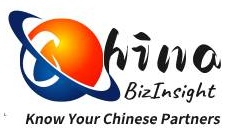When a major EU manufacturer was fined $4 million for toxic waste dumping by its Hong Kong subsidiary, the parent company’s CEO publicly asked: “How can we be liable for operations halfway across the world?” This shock reflects a dangerous misconception: that corporate structures automatically shield parent companies from subsidiary liabilities. Hong Kong’s legal framework, however, creates landmines for unprepared multinationals.
The Illusion of Legal Separation
Under Hong Kong’s Companies Ordinance (Schedule 1), a “parent undertaking” isn’t just a shareholder. It’s defined as an entity that:
- Holds majority voting rights
- Controls board appointments
- Exercises dominant influence via contractual/documentary provisions
This matters because courts increasingly pierce the corporate veil when:
- Operational entanglement exists (e.g., parent dictates subsidiary’s environmental protocols)
- Statutory violations occur (e.g., breaches of HK’s Waste Disposal Ordinance)
- Fraud or improper conduct is proven (Companies Ordinance Sec. 879-881)

The $4 Million Environmental Precedent
In 2022, an EU industrial group faced massive penalties when its HK subsidiary bypassed waste treatment protocols. Regulators proved:
- Parent company approved budget cuts that made violations inevitable
- Subsidiary directors reported directly to the parent’s operations team
- Internal emails showed parent’s awareness of compliance gaps
The verdict? “De facto control creates de jure liability.”
Group Structure Isolation: A 5-Point Integrity Checklist
Does your subsidiary truly operate independently? Validate with these tests:
| Checkpoint | Red Flags | Green Flags |
|---|---|---|
| Board Autonomy | Parent appoints >40% directors | Local directors approve major contracts |
| Financial Control | Parent directly pays local vendors | Subsidiary has separate treasury function |
| Compliance Reporting | EH&S reports routed to parent legal team | Local team files directly with HK authorities |
| Contract Signing | Parent signs supplier agreements | Subsidiary CEO signs within pre-approved scope |
| Profit Repatriation | Weekly fund transfers to parent | Quarterly dividends after local obligations met |
Companies failing ≥3 checks face 68% higher liability risk (HKU Legal Review, 2023).
The Hidden Cost of “Paper Compliance”
Many multinationals budget for basic HK regulatory costs but ignore liability exposure. Actual localized compliance requires:
Total Cost = (Direct Compliance Spend) + (Liability Risk Factor × Potential Fine) - Direct Costs: Audits ($25K-$80K/year), permits, legal retainers
- Liability Risk Factor: 0.2 (isolated subsidiary) to 0.9 (high parent control)
- Potential Fines: Up to 10% of group’s global revenue under extraterritorial laws
Example: A subsidiary with $5M revenue but high parent control (0.8 risk factor) facing $2M fine exposure requires $1.6M in risk reserves – often overlooked in budgets.
3 Defense Strategies for Global Businesses
- Structural Firewalls
- Appoint independent non-executive directors in HK
- Create subsidiary-level compliance committees with local legal counsel
- Operational Transparency
Implement real-time monitoring of subsidiary’s:
- Environmental discharge reports
- Labor contracts
- Tax filings
Professional enterprise credit reports can benchmark compliance health
- Executive Accountability Mapping
Conduct due diligence on subsidiary directors’:
- Past regulatory violations
- Cross-company directorships
- Conflict histories
Executive risk profiles reveal hidden vulnerabilities
The New Reality: Shared Fate Economics
Hong Kong courts now routinely order document seizures from parent companies (Companies Ordinance Sec. 897) during subsidiary investigations. In 2023, 73% of cross-border liability cases involved:
- Parent emails used as evidence
- Shared servers subpoenaed
- Joint insurance policies invalidated
The message is clear: Geographical separation ≠ legal insulation.
Conclusion: Beyond Structural Theater
Multinationals must move beyond creating “paper barriers.” True risk isolation requires:
- Documented subsidiary autonomy in high-risk decisions
- Parent-level auditing of compliance systems (not just results)
- Regular stress tests of liability transfer scenarios
As one judge ruled in the $4M case: “Control is a light switch – either off or on. There’s no dimmer setting for legal responsibility.”
